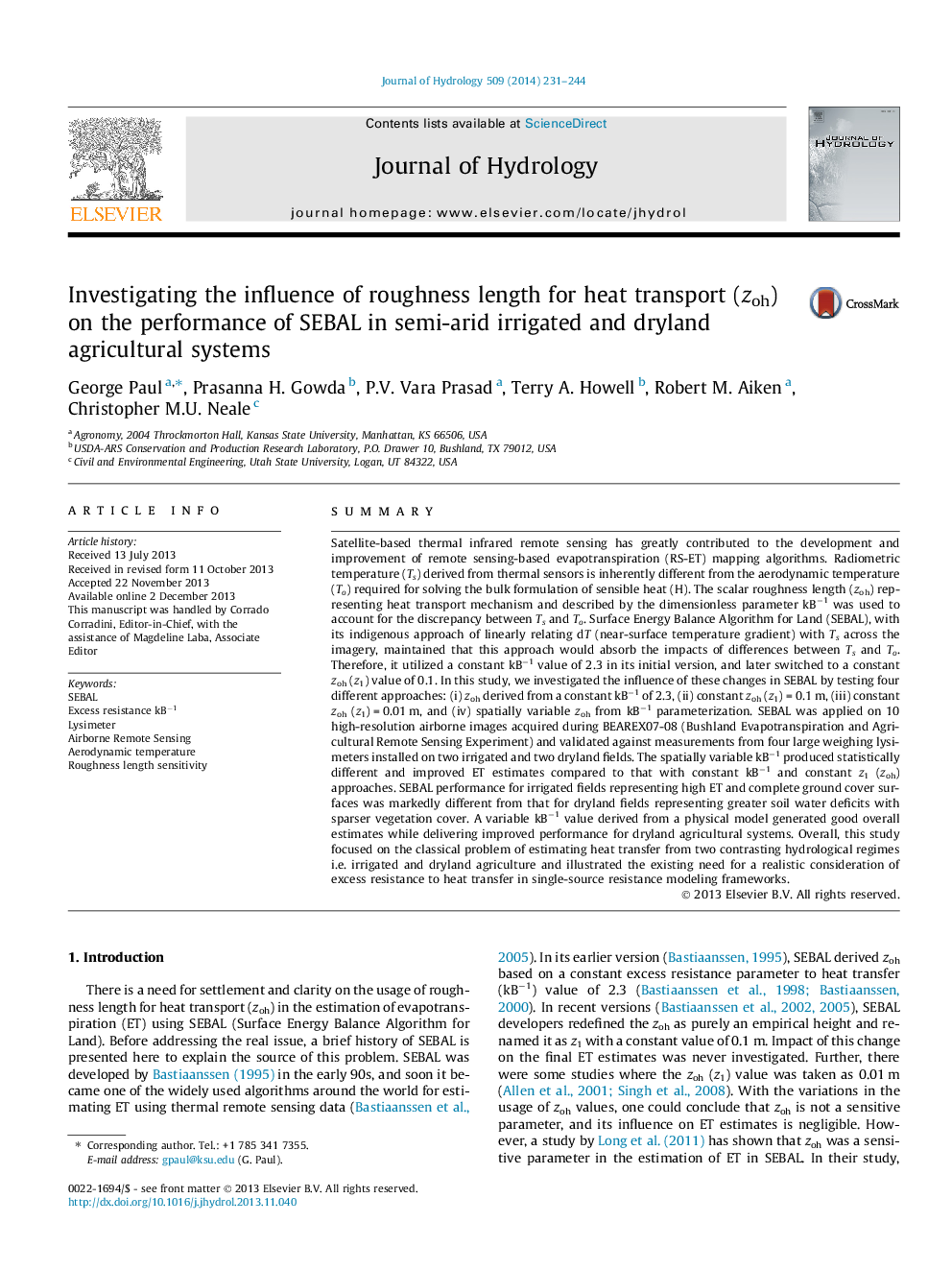| کد مقاله | کد نشریه | سال انتشار | مقاله انگلیسی | نسخه تمام متن |
|---|---|---|---|---|
| 6413413 | 1629939 | 2014 | 14 صفحه PDF | دانلود رایگان |

- SEBAL performance was markedly different for irrigated and dryland fields.
- Sensible heat play limited role in the accuracy of LE for complete cover irrigated fields.
- Scalar roughness length zoh has large sensitivity in the flux estimation from SEBAL.
- Single source resistance formulation has limited capability under sparse vegetation.
- Spatially variable kBâ1 value incorporated into SEBAL generated good overall results.
SummarySatellite-based thermal infrared remote sensing has greatly contributed to the development and improvement of remote sensing-based evapotranspiration (RS-ET) mapping algorithms. Radiometric temperature (Ts) derived from thermal sensors is inherently different from the aerodynamic temperature (To) required for solving the bulk formulation of sensible heat (H). The scalar roughness length (zoh) representing heat transport mechanism and described by the dimensionless parameter kBâ1 was used to account for the discrepancy between Ts and To. Surface Energy Balance Algorithm for Land (SEBAL), with its indigenous approach of linearly relating dT (near-surface temperature gradient) with Ts across the imagery, maintained that this approach would absorb the impacts of differences between Ts and To. Therefore, it utilized a constant kBâ1 value of 2.3 in its initial version, and later switched to a constant zoh (z1) value of 0.1. In this study, we investigated the influence of these changes in SEBAL by testing four different approaches: (i) zoh derived from a constant kBâ1 of 2.3, (ii) constant zoh (z1)Â =Â 0.1Â m, (iii) constant zoh (z1)Â =Â 0.01Â m, and (iv) spatially variable zoh from kBâ1 parameterization. SEBAL was applied on 10 high-resolution airborne images acquired during BEAREX07-08 (Bushland Evapotranspiration and Agricultural Remote Sensing Experiment) and validated against measurements from four large weighing lysimeters installed on two irrigated and two dryland fields. The spatially variable kBâ1 produced statistically different and improved ET estimates compared to that with constant kBâ1 and constant z1 (zoh) approaches. SEBAL performance for irrigated fields representing high ET and complete ground cover surfaces was markedly different from that for dryland fields representing greater soil water deficits with sparser vegetation cover. A variable kBâ1 value derived from a physical model generated good overall estimates while delivering improved performance for dryland agricultural systems. Overall, this study focused on the classical problem of estimating heat transfer from two contrasting hydrological regimes i.e. irrigated and dryland agriculture and illustrated the existing need for a realistic consideration of excess resistance to heat transfer in single-source resistance modeling frameworks.
Journal: Journal of Hydrology - Volume 509, 13 February 2014, Pages 231-244